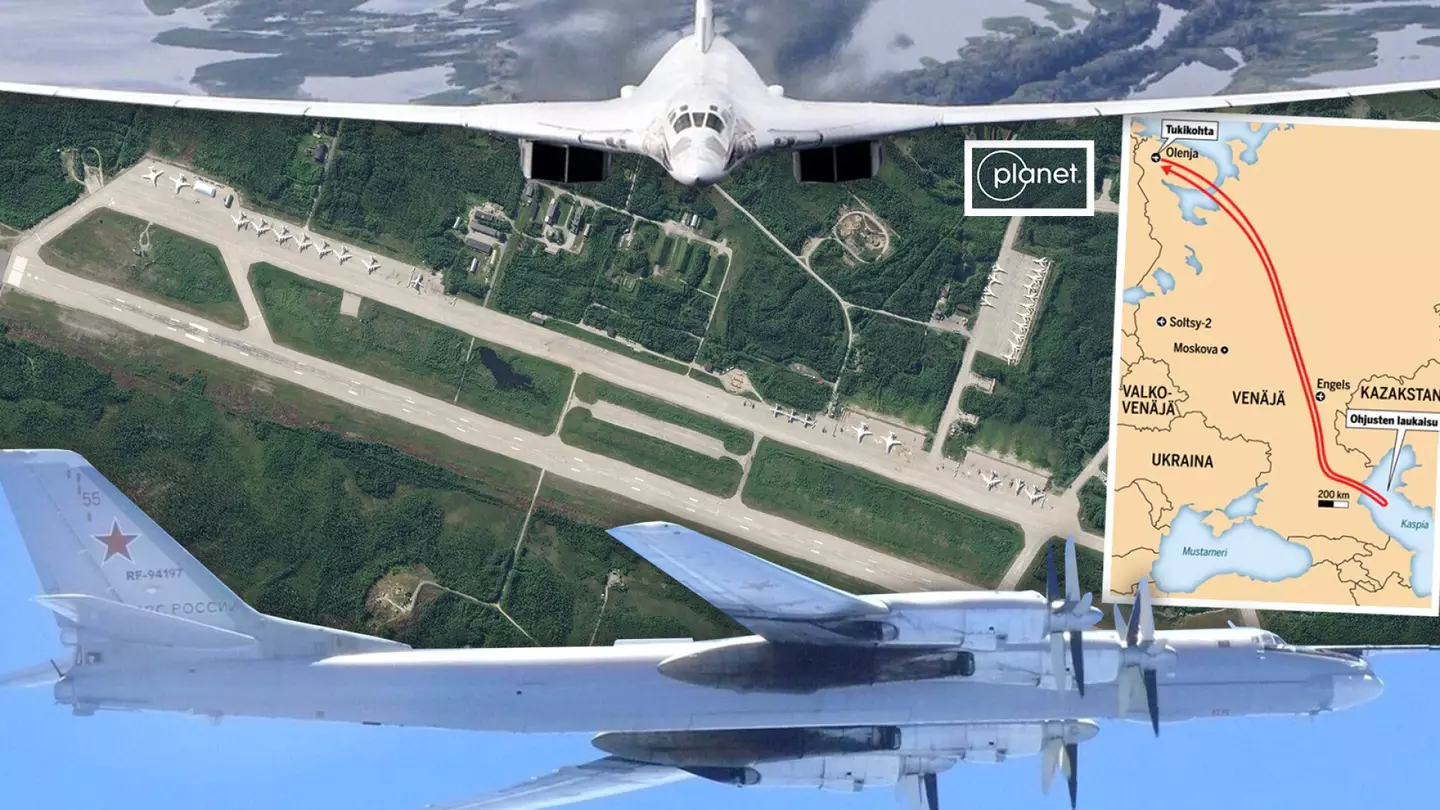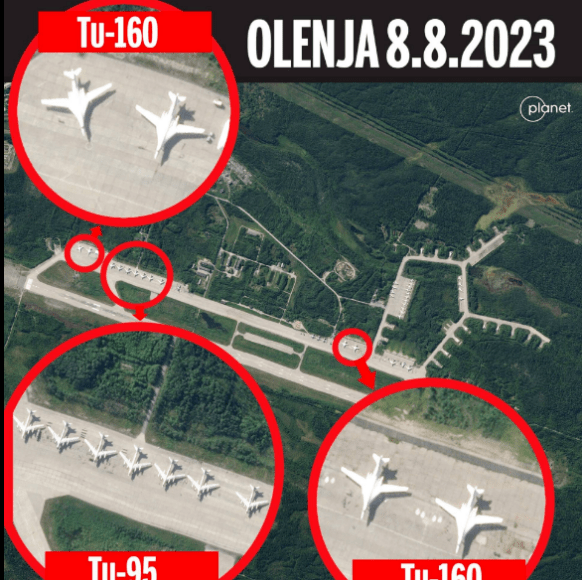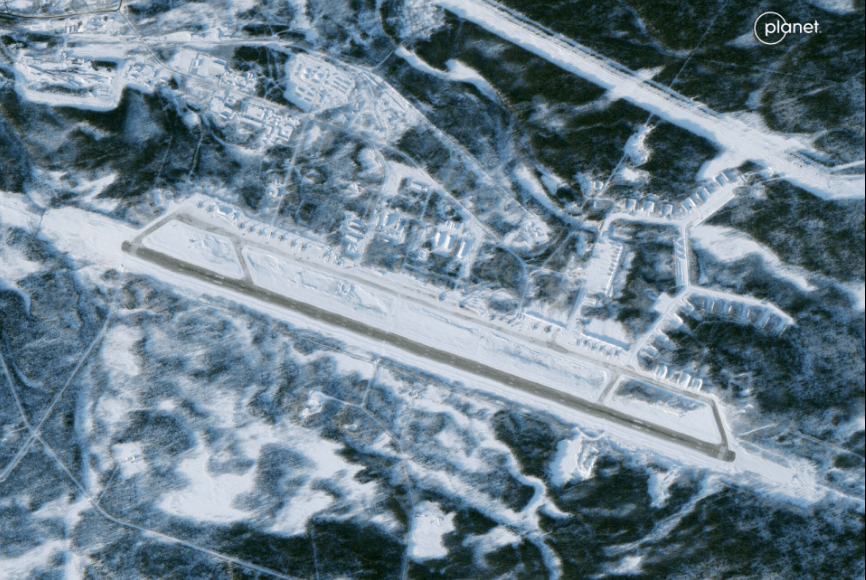
Russia deploys heavy bombers to NATO borders – media (photo)
According to journalists, the Kremlin is redeploying aircraft to the Kola Peninsula in an attempt to protect the planes from possible attacks by the Ukrainian Armed Forces.
Russia is building up the presence of its powerful bombers at the Olenya air base on the Kola Peninsula. This is clearly visible on satellite images provided by Planet Labs, the Finnish newspaper Ilta-Sanomat wrote on August 27.
The publication notes that the Olenya base plays a key role in Russia’s aggressive campaign against Ukraine. Satellite images show many Tu-95 and Tu-160 aircraft, which are the backbone of the country’s strategic bombing power.
These bombers regularly depart from Olen to the south to conduct missile strikes. After firing missiles in the direction of Ukraine, they spend many hours returning to the base, which is located just 150 kilometers from the Finnish border.
Professor Justin Bronk, a researcher at the UK’s Royal United Services Institute (RUSI) and a leading global expert on air warfare, confirms that a significant number of Russian bombers have been deployed to the Olenka base.
Bronk notes that the photos show Tu-95 and Tu-160 bombers, as well as An-22 and Tu-22M3 aircraft.
The last two types are old models. The An-22 is a transport aircraft, and the Tu-22M3 is a supersonic bomber, which is also considered a strategic aircraft.
The database was activated last year. In December, Ukraine struck the Engels base, about 600 kilometers from the Russian border. This forced Russia to move the base’s equipment to a safe location as far away from the area of attack by the Ukrainian armed forces as possible.
“The bombers were redeployed to other bases and positions to reduce the Engels’ vulnerability to drone attacks,” Bronk said.
A photo taken last February shows 9 Tu-95s and 2 Tu-160s on the Olenyachi runway, which was previously empty.
The largest number of Tu-95s was spotted in June – 15, and in August there were 4 Tu-160s on the runway.
According to Pekki Tovere, former head of the General Staff’s Main Intelligence Directorate and now a member of the Finnish parliament, adding the usual 20 Tu-22M3 bombers, about a third of Russia’s intercontinental air force is concentrated at the Olenya base.
“So it’s a significant number, and it’s significant because they have to leave their own base in Engels to dodge Ukrainian attacks. Support and maintenance are built into Engels, so they have to operate on a temporary basis in Olenne,” Toveri said.
The publication also notes that last weekend Ukraine may have managed to strike the Soltsy-2 base near Novgorod. One Tu-22M3 was destroyed here. In response, Russia deployed its bombers to the Olenka base.
According to Toveri, this shows the difficult situation of Russia, which cannot even effectively protect a strategic bomber base at a considerable distance from the Ukrainian border. This also points to the insufficient capacity of Russia’s air surveillance and air defense system.
On August 19, the media reported that a UAV attacked an airfield in the Novgorod region. The strike hit theSoltsy airfield, and at least two bombers were damaged by fire.
On August 21, it became known that the Russian air base“Shaykovka” was also attacked by a UAV. According to some reports, the UAV crash was recorded on the airfield, forming a crater. This air base is home to Tu-22M3 strategic bombers.
On the night of August 27, SBU counterintelligence attacked the airfield with military equipment and Russian aircraft in Kursk with drones





